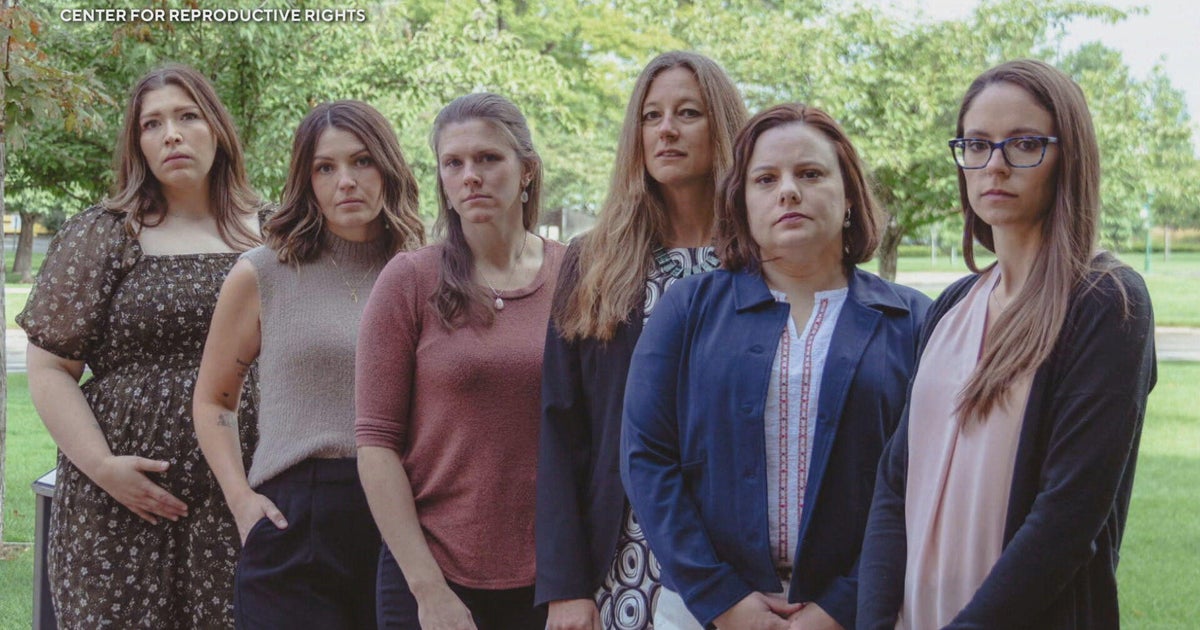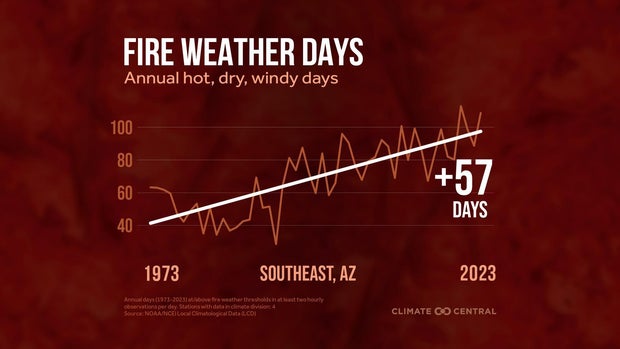CBS News
Oregon’s wildfire grew so large it created its own weather system. Here’s how that can happen.

Oregon’s Durkee Fire – the largest active blaze in the U.S. – has burned more than 268,500 acres of land. And while that amount of lost land poses an aggressive and dangerous threat, there’s another threat wildfires like Durkee can present that many aren’t aware of: they can create their own weather systems.
“Fires create their own weather, they can get very intense, and they can really impact the weather around them,” Craig Clements, of San Jose State University’s Wildfire Interdisciplinary Research Center, told a college radio station in 2022. “It’s one of the phenomena that we just don’t get enough observations of.”
The Flight Safety Foundation, a nonprofit dedicated to aviation safety, explains that while the movement and size of fires tend to be the most immediate concerns, sometimes fires can expand in a way where “the dangers multiply and the situation becomes much more complex and less predictable.”
“Larger fires, especially ones not driven by strong winds, can develop significant convective columns that shoot upward for thousands of feet,” the nonprofit says. “With a significant convective column, a wildfire can literally start producing its own weather.”
That’s what happened with Durkee.
The fire spawned a pyrocumulus cloud, which according to NASA’s Earth Observatory forms when the heat forces the air to rise and leads to water vapor cooling and condensing. These clouds are similar to cumulus clouds, except these are formed by fire instead off the ground. They typically appear as white patches above darker smoke.
David McNew / Getty Images
“That can happen when a fire becomes plume-dominated,” National Weather Service meteorologist Stephen Parker said. “It’s like a thunderstorm on top of the fire, generated by the heat of the fire.”
Parker said that these clouds allow smoke and ash to travel higher than they normally would, and if there is enough moisture present, it can also create rain and lightning. In that situation, the Royal Meteorological Society explains, the fire has likely spawned pyrocumulonimbus clouds, or “thunder clouds.”
“This rain can create a downdraft of cooler air, which can then carry embers from the fire, igniting spot fires away from the source,” the organization says. “In some cases, dry lightning from these storms can strike without rain, further spreading the wildfire.”
NOAA researchers have been investigating these situations because the smoke in these cases lingers longer than smoke from typical wildfires.
“These fire clouds are growing larger and more frequent —witness record-breaking events in 2017, 2019 and 2020,” NOAA scientist Joshua Schwarz said last year. “Their recent impacts on the stratosphere have been impressive. Now we’ve learned how to track those impacts over longer time periods than we previously recognized were significant. This means we’ll now be able to track changes in their impacts as the climate evolves.”
According to the Royal Meteorological Society, wildfires can also generate dangerous fire tornadoes. And NOAA has also documented that wildfires can cause firestorms, which happen when they develop their own wind system.
“It all starts because heat is constantly and quickly rising from the fire. As all this heat and air move upwards, it leaves behind some empty space. Air from all around that fire rushes in to fill that gap. That movement of air creates powerful wind called an updraft,” NOAA says. “In some cases, the rising air can be so fast it creates a fire whirl, also known as a fire tornado. Seriously. A tornado of fire.”
Drought and high temperatures serve as fuel for wildfires, and as global temperatures continue to rise, that fuel will only become more present, increasing the likelihood of blazes. The number of days of fire weather, which refers to the conditions that promote wildfire spread, has already increased, according to the nonprofit Climate Central.
Climate Central
Little Rock, Arkansas, has four more fire weather days today compared to 1973, Climate Central scientists found. Southeast Arizona, meanwhile, has gained nearly two additional months of fire weather days in that period. The Chico, California, area has gained nearly two weeks of fire weather days.
NOAA says that “climate change has been the main driver of the increase in fire weather in the western United States,” and that as conditions continue to get warmer and dryer, it could lead to “longer and more active fire seasons.”
“For much of the U.S. West, projections show that an average annual 1 degree C temperature increase would increase the median burned area per year by as much as 600% in some types of forests,” the agency says. “In the Southeastern United States modeling suggests increased fire risk and a longer fire season, with at least a 30 percent increase from 2011 in the area burned by lightning-ignited wildfire by 2060.”
CBS News
Woman gives emotional testimony in Idaho abortion ban case

Watch CBS News
Be the first to know
Get browser notifications for breaking news, live events, and exclusive reporting.
CBS News
Palestinians hope Trump will end the war in Gaza

Watch CBS News
Be the first to know
Get browser notifications for breaking news, live events, and exclusive reporting.
CBS News
Bela Karolyi, polarizing U.S. gymnastics coach, dies at 82

Bela Karolyi, the charismatic if polarizing gymnastics coach who turned young women into champions and the United States into an international power, has died. He was 82.
A spokesperson for USA Gymnastics confirmed to CBS News by email that Karolyi died Friday. No cause of death was given.
Karolyi and wife Martha trained multiple Olympic gold medalists and world champions in the U.S. and Romania, including Nadia Comaneci and Mary Lou Retton.
Ron Jenkins/Fort Worth Star-Telegram/Tribune News Service via Getty Images
“A big impact and influence on my life,” Comaneci, who was just 14 when Karolyi coached her to gold for Romania at the 1976 Montreal Olympics, posted on Instagram.
The Karolyis defected to the United States in 1981 and over the next 30-plus years became a guiding force in American gymnastics, though not without controversy. Bela helped guide Retton — all of 16 — to the Olympic all-around title at the 1984 Games in Los Angeles and memorably helped an injured Kerri Strug off the floor at the 1996 Games in Atlanta after Strug’s vault secured the team gold for the Americans.
Karolyi briefly became the national team coordinator for USA Gymnastics women’s elite program in 1999 and incorporated a semi-centralized system that eventually turned the Americans into the sport’s gold standard. It did not come without a cost. He was pushed out after the 2000 Olympics after several athletes spoke out about his tactics.
It would not be the last time Karolyi was accused of grandstanding and pushing his athletes too far physically and mentally.
During the height of the Larry Nassar scandal in the late 2010s — when the disgraced former USA Gymnastics team doctor was effectively given a life sentence after pleading guilty to sexually assaulting gymnasts and other athletes with his hands under the guise of medical treatment — over a dozen former gymnasts came forward saying the Karolyis were part of a system that created an oppressive culture that allowed Nassar’s behavior to run unchecked for years.
Still, some of Karolyi’s most famous students were always among his staunchest defenders. When Strug got married, she and Karolyi took a photo recreating their famous scene from the 1996 Olympics, when he carried her onto the medals podium after she vaulted on a badly sprained ankle.










